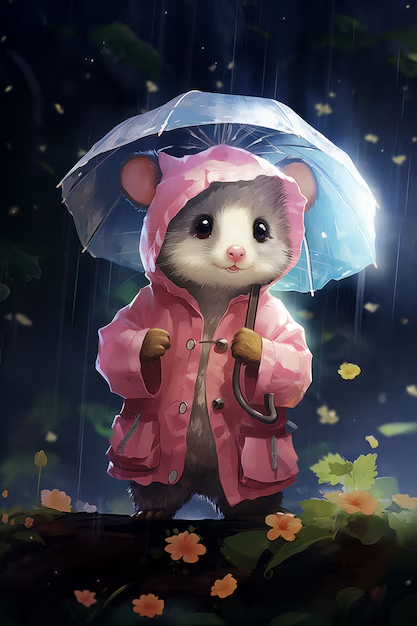Art often reflects the cultural and emotional zeitgeist of its time, and in this article, we’ll delve into a unique and intriguing art form represented by the term “Cute:3izb-mgpdxo=”. This seemingly cryptic phrase can be broken down to explore the essence of contemporary “cute” art, its origins, characteristics, and its place in the modern art landscape. Let’s unravel the layers of this art form, examining its appeal, influence, and significance in today’s world.
Understanding the Concept of “Cute:3izb-mgpdxo=” Art
Defining Cute Art
At its core, “cute” art is a genre that focuses on aesthetics that evoke feelings of warmth, affection, and delight. This art often features characters or objects that are visually appealing and endearing, designed to elicit positive emotional responses from viewers. The term “cute” in art typically refers to an exaggerated style that simplifies features and colors to create a charming and approachable appearance.
- Characteristics of Cute Art: Common characteristics include oversized eyes, soft and rounded shapes, vibrant colors, and playful or whimsical themes. The intent is to create something visually appealing and emotionally engaging, often invoking a sense of innocence or playfulness.
Decoding “3izb-mgpdxo=”
The phrase “3izb-mgpdxo=” appears to be a code or alphanumeric string, potentially representing a unique identifier or tag within a specific digital or artistic community. In this context, it might relate to a particular piece of art, an artist’s signature style, or an online art project. Understanding its significance involves exploring how such codes are used to categorize or identify digital art in contemporary platforms.
Historical Evolution of Cute Art
Origins and Influences
The concept of “cute” art has historical roots in various cultures. The modern interpretation of cute art can be traced back to Japanese pop culture, particularly the kawaii (可愛い) aesthetic. Kawaii, meaning “cute” or “adorable” in Japanese, became a significant cultural phenomenon in the late 20th century, influencing global art and design.
- Historical Influences: Traditional Japanese art, including ukiyo-e and manga, contributed to the development of kawaii culture. Western influences also played a role, as elements of cartoon and comic art integrated into the global aesthetic of cuteness.
The Rise of Digital Cute Art
With the advent of digital technology, cute art evolved and adapted to new media. Online platforms such as social media, art communities, and digital marketplaces provided artists with opportunities to showcase their work and connect with a global audience. The integration of “cute” elements into digital art forms, such as emojis and digital stickers, further popularized the genre.
Characteristics and Styles of “Cute:3izb-mgpdxo=” Art
Visual Elements
“Cute:3izb-mgpdxo=” art likely features key visual elements that define its aesthetic. These elements might include:
- Simplified Features: Characters and objects in this art form often have exaggerated, simplified features, such as large, expressive eyes and rounded shapes.
- Vibrant Colors: The use of bright, cheerful colors enhances the visual appeal and emotional impact of the art.
- Playful Themes: The subjects of the art are usually whimsical, often incorporating fantastical or imaginative elements that resonate with viewers.
Techniques and Mediums
Artists working within this genre might use various techniques and mediums to achieve the desired “cute” effect:
- Digital Illustration: Many contemporary cute artists utilize digital tools to create and refine their work, taking advantage of software to achieve precise color and detail.
- Traditional Media: Some artists still prefer traditional media, such as watercolor or acrylic paint, to capture the tactile qualities and textures of cute art.
The Appeal of “Cute:3izb-mgpdxo=” Art
Emotional Connection
The appeal of cute art lies in its ability to create a strong emotional connection with viewers. The charming and endearing nature of the art often invokes feelings of happiness, nostalgia, and comfort. This emotional resonance makes cute art highly relatable and engaging for diverse audiences.
Cultural Impact
Cute art has a significant cultural impact, influencing fashion, design, and consumer products. Characters and styles from cute art often appear in merchandise, advertising, and popular media, reflecting and shaping contemporary cultural trends.
Prominent Artists and Examples
Influential Figures
Several artists have gained recognition for their contributions to the cute art genre. Some notable figures include:
- Yoshitomo Nara: Known for his provocative and emotionally charged depictions of childlike characters, Nara’s work blends innocence with a hint of rebellion.
- Hello Kitty Creator: Sanrio’s creation, Hello Kitty, has become an iconic symbol of kawaii culture, influencing global art and design.
Notable Works
Examples of prominent works within the “cute” art genre might include:
- Digital Stickers: Online platforms often feature cute digital stickers, which use simplified and charming designs to communicate emotions and messages.
- Character Designs: From plush toys to animated series, character designs in cute art often become beloved symbols of popular culture.
The Role of “Cute:3izb-mgpdxo=” Art in Contemporary Society
Digital and Social Media Influence
In today’s digital age, cute art has a pervasive presence on social media platforms. Artists and creators use these platforms to share their work, engage with fans, and participate in online communities. The viral nature of cute content often leads to widespread sharing and influence.
For more information visit my website finalizeit
Merchandise and Branding
Cute art frequently crosses into merchandise, including clothing, accessories, and home decor. Brands leverage the appeal of cute art to connect with consumers and create a distinctive identity. This commercialization reflects the art’s broad appeal and cultural significance.
Future Trends and Developments
Evolution of Style
As trends in art and design evolve, so too does the genre of cute art. Future developments may include new digital technologies, innovative artistic techniques, and shifts in cultural influences. The adaptability of cute art ensures that it remains relevant and continues to capture the imagination of new generations.
Expanding Influence
The influence of cute art is likely to expand further into various aspects of popular culture. Its impact on media, branding, and consumer products will continue to grow, reflecting its enduring appeal and versatility.
Conclusion
“Cute:3izb-mgpdxo=” art represents a dynamic and evolving genre that captures the essence of charm and emotional engagement. By exploring its origins, characteristics, and impact, we gain insight into a genre that transcends cultural and technological boundaries. Whether through digital illustrations, merchandise, or social media, cute art continues to resonate with audiences worldwide, reflecting the universal appeal of endearing and visually captivating creations.


